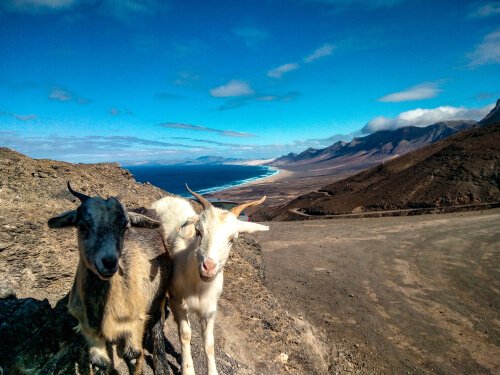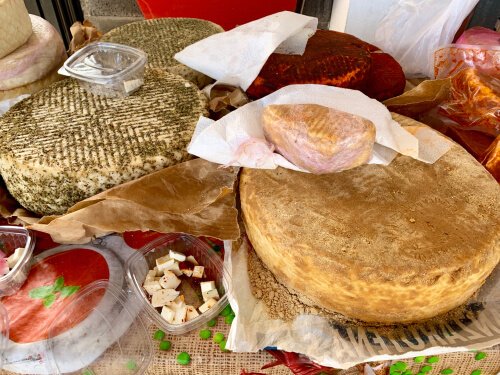The goats of Fuerteventura
The goats of Fuerteventura are a symbol of one of the most unknown Canary Islands. In a hard habitat like this volcanic island, the goats have allowed to exploit the territory and the scarce resources of the island to supply the local population for thousands of years.
It is difficult to trace the history of the Fuerteventura goats: when the conquistadors arrived in the Canary Islands in the 15th century, these animals were found in abundance , although archaeological excavations trace their history on Majorera Island more than 3,000 years ago.
Fuerteventura's goats
Undoubtedly, the goats of Fuerteventura are a symbol for this tourist and natural site, and it is difficult to make a visit to the island and not meet these animals live and direct, or finish by taking a gift or souvenir that represents these charismatic animals. Although the majorera goat is distributed on other islands, it is undoubtedly native to Fuerteventura.
The majorera goat breeding is mainly dedicated to the production of milk strong>, especially for the production of Majorero cheese, one of the products that most populates the markets of this island. And it is that of the four breeds of goats that exist in the Canary Islands - next to this we find the palm tree and two races from Tenerife - it has the highest milk production, compared to other breeds of meat, the main one produced on the island.

Goat majorera is a species of long and thin limbs, with long ears and arched horns. The hooves are dark and are very adapted to the special aridity of the Canary Island. The layer of these animals is polychrome, that is, composed of various spots of brownish, white and black. The hair is short, to face the hot months, and the mucous membranes have dark colors.
It is believed that the goats of Fuerteventura are at the crossroads of African goats -mainly Nubian and Maltese- with the aboriginal goats that inhabited the island long ago.
Traditionally, these goats are kept in extensive cattle ranching and milked once a day, and said milk was collected in so-called tofios, some containers linked to the Majorera culture. They are vessels with a large spillway to collect milk, and they were normally made in reddish tones.
Majorero cheese
But if something characterizes the goats of Fuerteventura is the cheese produced with their milk: the majorero cheese is produced in six municipalities of this island and has Denomination of Origin since 1996, a category that recognizes the value of an elaborated product locally like this.

This goat cheese is manufactured in normally small cylinders, and its bark is molded with palm leaves. Interestingly, this crust is usually rubbed with oil, paprika or gofio, a toasted wheat or corn flour very typical of the archipelago.
This cheese is compact, and there are varieties both tender and cured, whose flavor and tradition has marked the culture of the island, in addition to different dressings that make Majorero cheese a product of a thousand varieties. Without a doubt, leaving the Canary Islands without tasting Fuerteventura's goat cheese is unforgiving.


